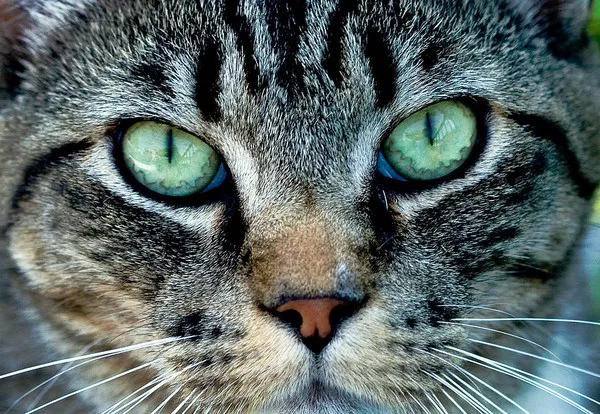The Japanese Bobtail is a breed of domestic cat that has captured hearts with its unique short tail and lively, intelligent personality. Originating from Japan, this breed has a rich history dating back centuries, often featured in folklore and art. The distinctive trait of the Japanese Bobtail is its bobbed tail, which is the result of a naturally occurring genetic mutation. This characteristic not only makes the breed stand out but also raises questions about its health and well-being. In this essay, we will explore various aspects of the Japanese Bobtail’s health, including genetic predispositions, common health issues, and care recommendations to ensure these cats lead long, healthy lives.
Historical Background
The Japanese Bobtail has been an integral part of Japanese culture for hundreds of years. References to the breed can be found in ancient artwork and literature, where they are depicted as guardians of homes and temples. One of the most famous representations is the “Maneki Neko,” or Beckoning Cat, a symbol of good fortune and prosperity. Historically, these cats were valued for their ability to control rodent populations, especially in rice fields and on silk farms. Over time, the breed has become beloved as pets, known for their playful and social nature.
Genetic Characteristics
The defining feature of the Japanese Bobtail is its short, kinked tail, which is caused by a dominant gene. This gene results in a variety of tail lengths and shapes, each one unique to the individual cat. Unlike some other breeds with shortened tails, the Japanese Bobtail’s tail is not associated with any serious health problems. The gene responsible for the bobbed tail does not carry the same risks as those seen in breeds like the Manx, where the absence of a tail can lead to spinal issues. Instead, the Japanese Bobtail’s tail is typically flexible and can move freely without causing discomfort or pain.
Common Health Issues
While the Japanese Bobtail is generally a healthy breed, it is not immune to all health concerns. Like all animals, they can develop certain conditions that may affect their quality of life. Here are some of the more common health issues to be aware of:
Dental Problems: Japanese Bobtails, like many other breeds, can be prone to dental issues such as tartar buildup, gingivitis, and periodontal disease. Regular dental care, including brushing and professional cleanings, is essential to maintaining oral health.
Urinary Tract Issues: Male Japanese Bobtails may be at a higher risk for urinary tract blockages, which can be a medical emergency. Ensuring proper hydration and a balanced diet can help prevent these issues.
Heart Conditions: Some Japanese Bobtails may be susceptible to heart diseases, such as hypertrophic cardiomyopathy (HCM). Routine veterinary check-ups and echocardiograms can help detect early signs of heart problems.
Allergies and Skin Sensitivities: These cats can sometimes develop allergies or skin sensitivities, which may manifest as itching, redness, or hair loss. Identifying and managing the underlying cause, whether it’s food, environmental factors, or parasites, is crucial for their comfort.
Eye Conditions: Japanese Bobtails can occasionally experience eye issues, such as conjunctivitis or corneal ulcers. Keeping the eyes clean and addressing any signs of irritation promptly can help prevent complications.
Genetic Predispositions: While the bobbed tail itself is not associated with significant health risks, it’s important to note that breeding practices can influence overall health. Responsible breeders should prioritize genetic diversity and avoid inbreeding to reduce the risk of inherited disorders.
Care Recommendations
To ensure the health and well-being of your Japanese Bobtail, there are several key care recommendations to follow:
Nutrition: Provide a high-quality, balanced diet that meets your cat’s nutritional needs. Consult with your veterinarian to determine the best type of food and portion sizes based on your cat’s age, weight, and activity level.
Exercise and Enrichment: Japanese Bobtails are active and intelligent cats that thrive on mental and physical stimulation. Engage them in play, provide puzzle toys, and create an enriching environment to keep them happy and healthy.
Grooming: Although Japanese Bobtails have a relatively short coat, regular grooming is still important to remove loose hair and prevent matting. Brushing a few times a week can also help reduce shedding and minimize hairballs.
Veterinary Care: Schedule routine veterinary check-ups to monitor your cat’s health and catch any potential issues early. Vaccinations, parasite prevention, and dental care are all part of comprehensive veterinary care.
Socialization: Japanese Bobtails are social cats that enjoy human interaction. Spend time with your cat daily, and introduce them to new people and environments gradually to promote confidence and adaptability.
Spaying and Neutering: Unless you plan to breed your cat, spaying or neutering is recommended to prevent unwanted litters and reduce the risk of certain health problems, such as uterine infections and testicular cancer.
Conclusion
The Japanese Bobtail is a remarkable breed with a fascinating history and a reputation for being a healthy, active companion. While they can be prone to certain health issues, many of these can be managed with proper care and attention. By understanding the genetic characteristics of the breed, recognizing common health concerns, and following recommended care practices, you can help ensure that your Japanese Bobtail leads a long, healthy, and happy life. Whether you’re considering adopting a Japanese Bobtail or already share your home with one, this guide provides valuable insights into maintaining their well-being and enjoying the unique bond that this breed offers.
Related topic:

























